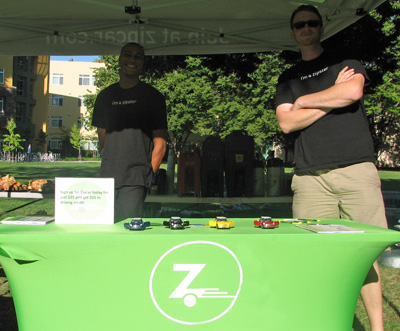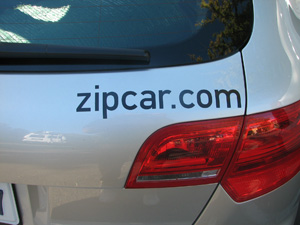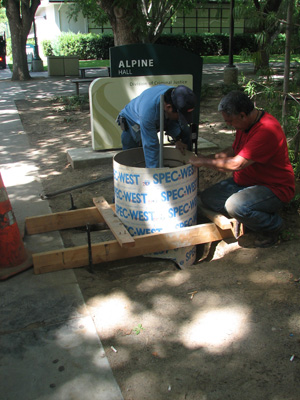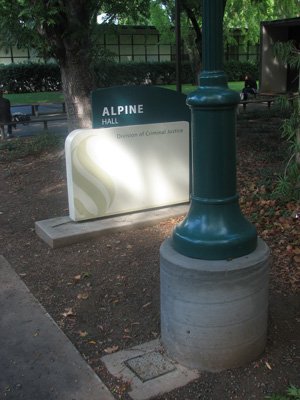ABA GREEN NEWS
ZIPCAR EXPANDS DRIVING ALTERNATIVES

Two Zipcar employees answering questions at an information booth.
University Transportation and Parking Services (UTAPS) has partnered with Zipcar to bring convenient and sustainable transportation options to students.
Starting this fall semester, two Zipcars will be located near the residence halls for student use. These cars will be available 24 hours a day for up to 180 miles per day.
"UTAPS thought it would be a great service to provide to our students," said Gina Lombardo, director of UTAPS. The program is part of a system-wide agreement between the California State University (CSU) and Zipcar.
Both the location and the availability of the Zipcars helps promote alternative transportation by allowing students to leave their cars at home. Only 686 of the 1,500 students who live in the residence halls bring their own vehicles with them to school.
"It's a proven concept that specifically makes sense for universities such as Sacramento State that have a large student population," said Dan Grossman, Zipcars' regional vice president for the West Coast. Dan is also a Sac State alumnus.
 While two Zipcars will be located on campus, an additional ten cars will be available throughout Sacramento. Campus Zipcars will also be available for use by faculty and staff.
While two Zipcars will be located on campus, an additional ten cars will be available throughout Sacramento. Campus Zipcars will also be available for use by faculty and staff.
Those interested in using a Zipcar must register online here. Remember to search for Sacramento State to find eligible discounts on annual fees and application fees. For more information about Zipcar on campus, contact UTAPS at:
(916) 278-7275.
ENERGY EFFICIENCY LIGHTS THE WAY

 Facilities Services spent the final weeks of summer and the first weeks of fall finishing up a host of campus improvement projects. One major project to replace exterior lighting placed a total of 104 new light fixtures across the campus.
Facilities Services spent the final weeks of summer and the first weeks of fall finishing up a host of campus improvement projects. One major project to replace exterior lighting placed a total of 104 new light fixtures across the campus.
What makes the fixtures unique is their use of energy efficient light bulbs. The bulbs produce better illumination and emit light that is easier on the eyes. They also provide lighting in areas near walkways identified as needing more coverage.
In addition to the energy savings, the lights provide a greater sense of security for students and are painted an aesthetically pleasing green to blend into the surroundings.


